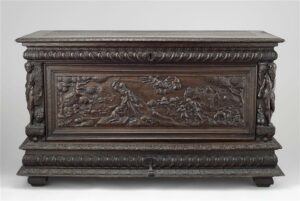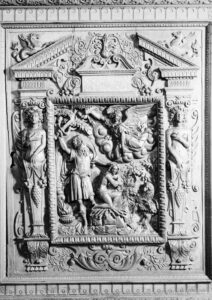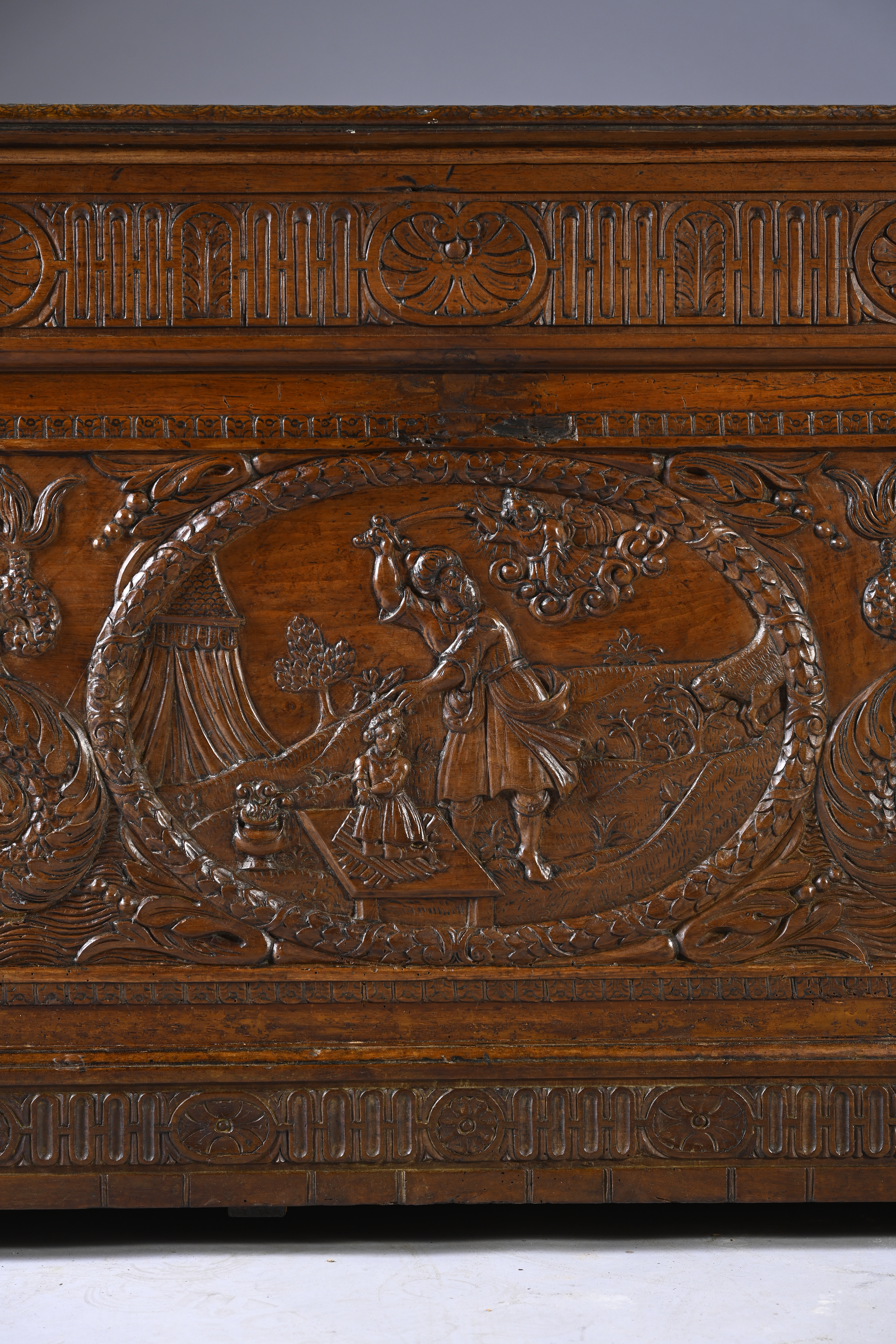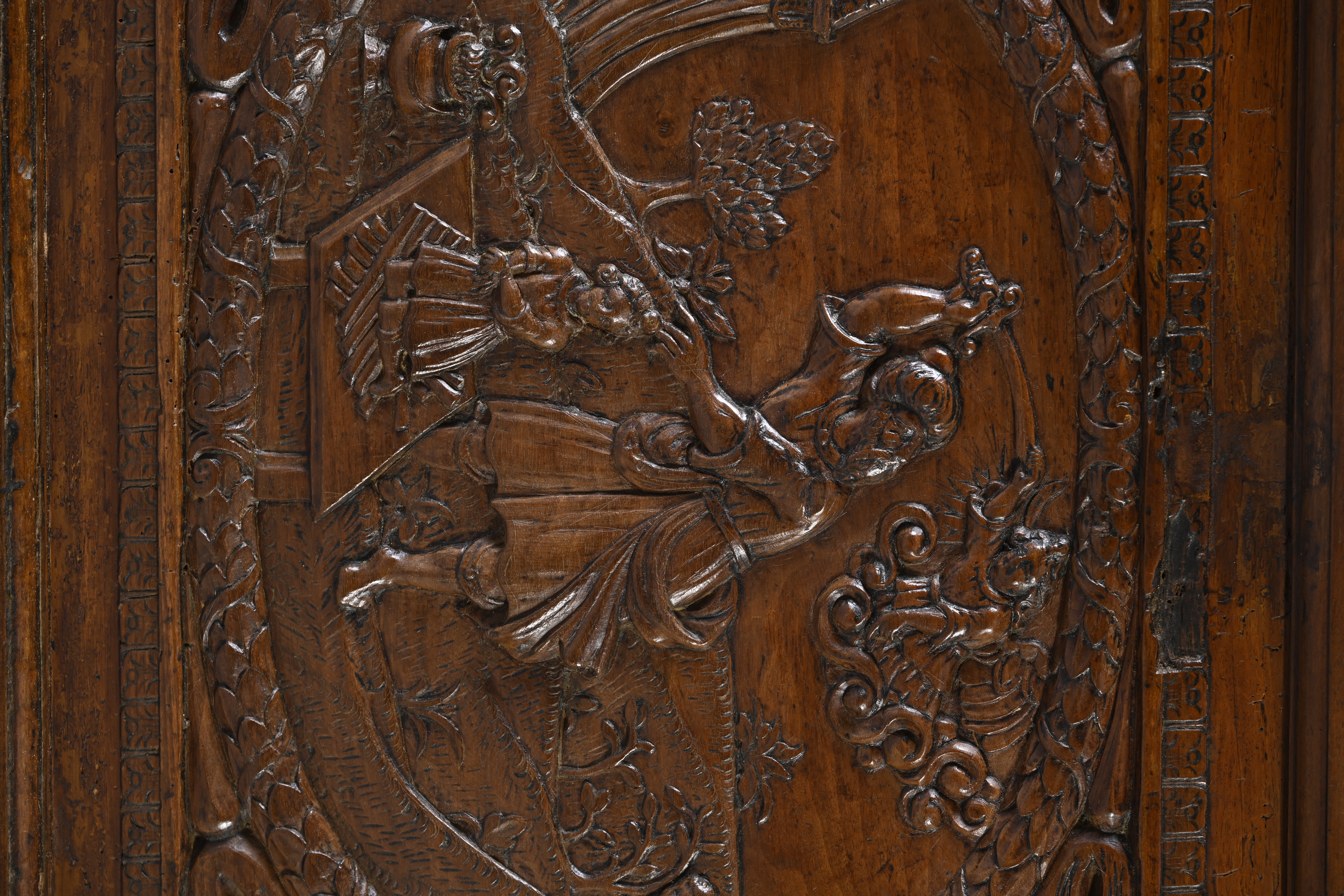Description
During the second half of the 16th century chests evolve. Their structure becomes more architectural while paintings and sculptures adorn the surfaces. The facade is no longer divided in panels or arcatures framed by pilasters, but from then on comprises one sculpted, panel framed with caryatids or terms. The sculptors work on mythological or biblical scenes from the Old Testament and the New Testament to ornate pieces of furniture destined to a secular or religious usage.
The artists carving the decor for panels to be incorporated in chests or cabinets often drew inspirations from the engravings executed by Bernard Salomon and illustrating Claude Paradin’s Les Quadrins Historiques de la Bible, published in 1553.

Engraving by Bernard Salomon illustrating the Sacrifice of Isaac
in Claude Paradin’s Les Quadrins historiques de la Bible, 1553
Amongst the themes particularly favoured by the artists appears the Sacrifice of Isaac. It can be spotted on various works such as a cupboard attributed to Hugues Sambin in the collections of the Fine Arts Museum of Dijon (inventory number CA T 903) or on a chest kept in the collections of the National Museum of the Renaissance in Ecouen, France.

Chest, collections of the National Museum of the Renaissance, Ecouen, France

Panel of the cupboard attributed to Hugues Sambin,
Fine Arts Museum of Dijon, France. (CA T 903)
The chest we introduce presently is also embellished with a depiction of the Sacrifice of Isaac .
It stands on two bun-feet carved with a gadroon decor. A frieze of roses and grooves highlight the lower edge of the chest.
The facade is enriched with a long panel depicting the biblical scene and is framed on each side with a draped man and woman wearing a stylised feather headdress.
On this remarkable panel is executed with the utmost care the Sacrifice of Isaac, scene during which God asks Abraham to sacrifice his son Isaac. Abraham is the central character. He is standing, wearing a tunic and a turban. He holds his sabre in one hand and grab his son by the hair with his other hand.





